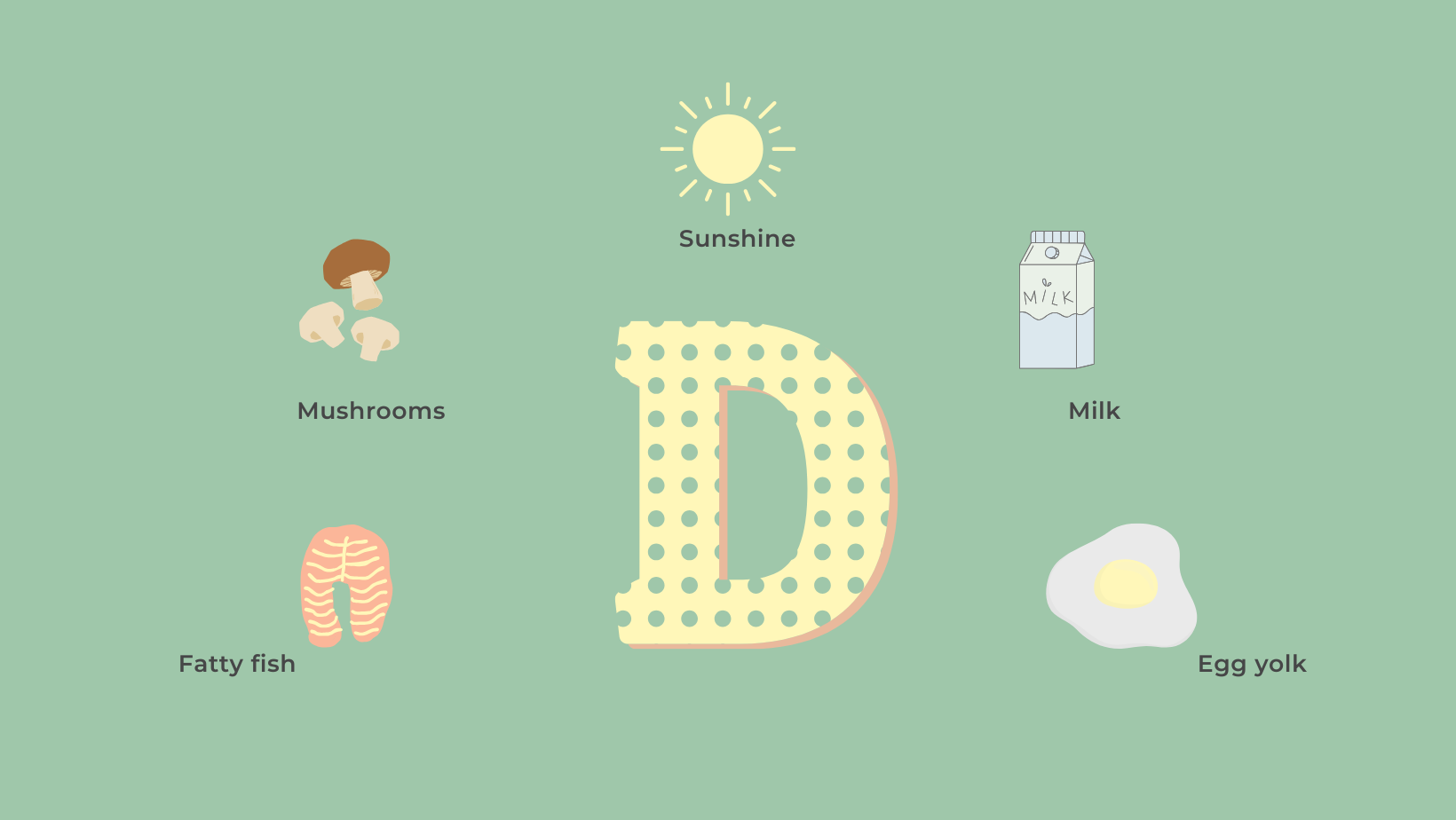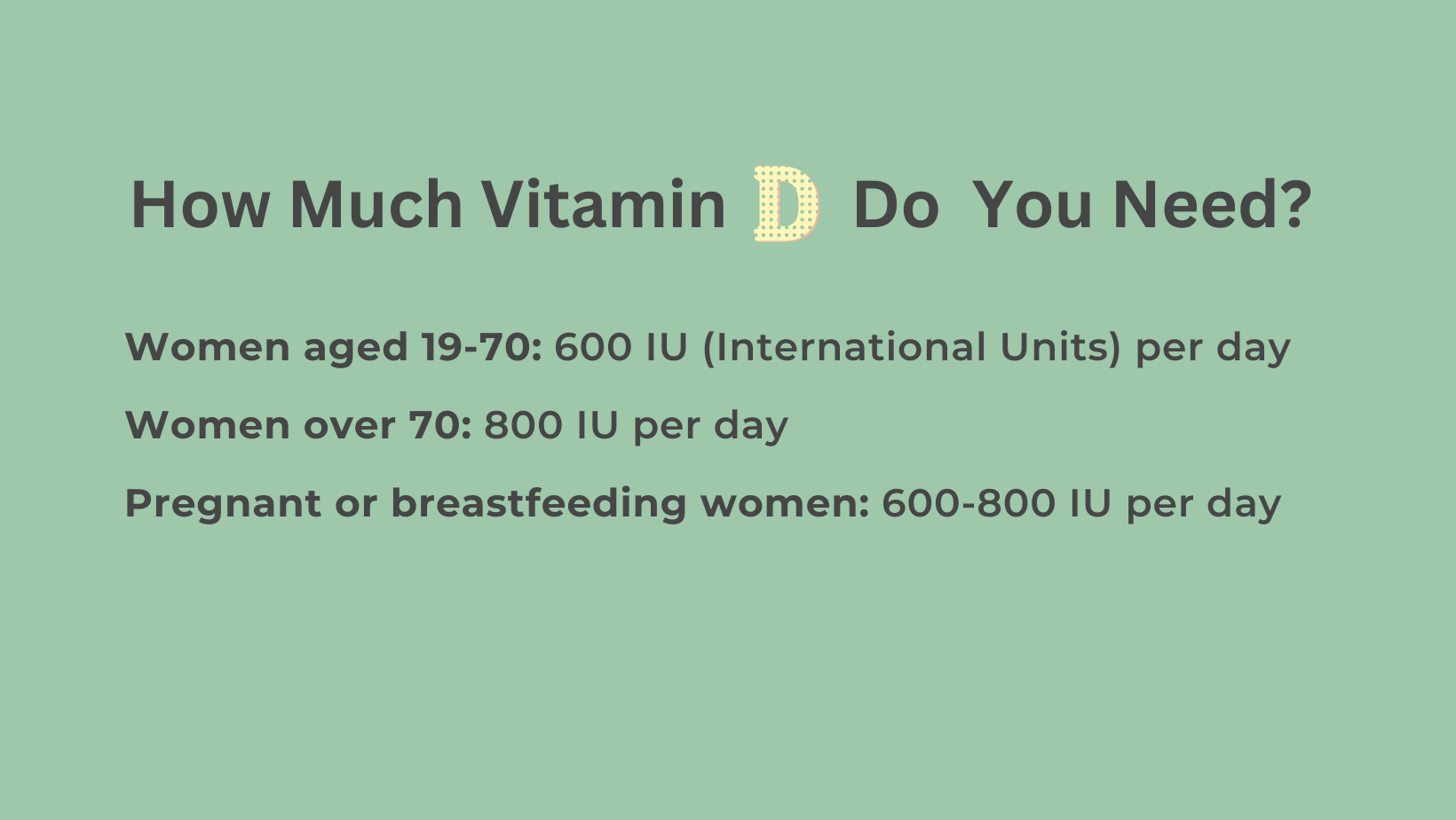The Sunshine Vitamin

With the colder months approaching and daylight hours shrinking as the clocks turn back, many of us find ourselves spending more time indoors. It’s the time of year when we’re more likely to reach for cozy blankets than bask in the sun, and our bodies notice the difference. One crucial thing that takes a hit during this seasonal shift? Our vitamin D levels.
Vitamin D, affectionately known as the “sunshine vitamin,” is essential for overall health but becomes especially important for immune support as we head into fall and winter. I talked briefly about vitamin D here.
Our bodies produce vitamin D when our skin is exposed to sunlight, which becomes harder to achieve as temperatures drop and daylight hours dwindle. This means it’s more critical than ever to be mindful of how we’re getting this vital nutrient.
But vitamin D is more than just a winter wellness buzzword. For women, it plays a role in many aspects of health—from supporting bone strength and hormonal balance to boosting mood and immune function. So, as we brace for the colder months and shorter days, let’s explore why vitamin D is so important, how much we really need, and how to ensure we’re getting enough.
The Role of Vitamin D in the Female Body
1. Bone Health and Calcium Absorption Vitamin D’s best-known job is to help the body absorb calcium, which is essential for building and maintaining strong bones. For women, this is particularly important to prevent bone density loss and conditions like osteoporosis, which can become more common as we age.
2. Immune Support While bone health is often the main focus, vitamin D’s role in immunity is equally significant. It helps activate the T-cells in our body that detect and fight off pathogens, playing a critical role in reducing the risk of infections. As flu season and cold weather collide, having adequate vitamin D levels can mean the difference between breezing through winter and facing back-to-back colds.
3. Hormonal Balance Vitamin D also has an impact on hormone regulation. It helps modulate estrogen levels, which can improve menstrual cycle regularity and overall hormonal balance. This can be especially beneficial for women navigating the complexities of different life stages, from menstrual health to perimenopause. Research shows that women with higher intakes of vitamin D and calcium in their diet had a lower risk of developing premenstrual syndrome (PMS) compared to those with a low intake.
Although vitamin D does not appear to offer much of a role in fertility in the absence of deficiency, adequate serum vitamin D levels are associated with more positive pregnancy tests, and live births in women undergoing artificial reproductive technologies.
4. Mood and Mental Health If you’ve ever felt a dip in mood during the darker months, you’re not alone. Lower exposure to sunlight can impact our body’s ability to produce vitamin D, which in turn affects serotonin—a key hormone for mood regulation. Adequate vitamin D levels can help combat seasonal affective disorder (SAD) and overall feelings of low energy or depression.
5.Glucose Metabolism Vitamin D also plays a role in supporting healthy glucose metabolism, which is particularly important for women aiming to manage or prevent insulin resistance and conditions like type 2 diabetes. Research suggests that vitamin D helps regulate insulin production and sensitivity, enhancing how cells respond to insulin. When vitamin D levels are adequate, the body is better equipped to maintain balanced blood glucose levels, reducing the risk of spikes and crashes that can affect energy, mood, and overall metabolic health.
Signs of Vitamin D Deficiency in Women
How can you tell if you’re not getting enough vitamin D? Here are some common signs:
- Persistent fatigue that doesn’t go away even with rest
- Bone and muscle pain
- Weakened muscles
- Mood changes, such as feeling more anxious or down
Who’s Most at Risk?
- Those who live in northern latitudes or areas with long winters
- People with darker skin, as melanin reduces the skin’s ability to produce vitamin D
- Women who spend most of their time indoors, especially during the workweek
- Older adults, as the skin’s ability to synthesize vitamin D decreases with age

Can You Overdo It? While rare, vitamin D toxicity is possible, so it's important to stay within safe limits. The upper limit for most adults is 4,000 IU per day, but I recommend to check with a healthcare provider before taking high doses.
Sources of Vitamin D: Sun, Food, and Supplements
1. Sun Exposure Natural sunlight is the best source of vitamin D, but with the shift to shorter days and colder weather, it can be tricky to get enough sun exposure. Aim for 10-30 minutes of midday sunlight exposure a few times a week when possible, but remember to balance sun safety with benefits.
2. Dietary Sources When sun exposure is limited, turn to foods rich in vitamin D:
- Fatty fish such as salmon, mackerel, and sardines
- Egg yolks
- Fortified foods like milk, plant-based milk, and cereals
- Mushrooms, especially UV-exposed varieties
3. Supplements If you find it hard to meet your vitamin D needs through sun and food alone (common during winter), supplements can be a reliable option. Look for vitamin D3 (cholecalciferol), which is more effective at raising blood levels than D2.
I also talked about how you can find the best supplement for you.
Vitamin D Through the Seasons
Navigating Winter Challenges: During fall and winter, when the sun is scarce and we’re bundled up against the cold, getting enough vitamin D from natural sources can be difficult. This is when focusing on diet and considering supplements becomes particularly valuable.
Travel Tips: If you’re lucky enough to travel somewhere sunny, take advantage of safe sun exposure. Keep in mind that while sunscreen is necessary for skin protection, it can block vitamin D synthesis, so finding a balance is key.
Vitamin D and Special Health Considerations for Women
Pregnancy and Postpartum: Vitamin D is vital for expectant and new mothers, supporting the immune health of both mom and baby and promoting bone development. Vitamin D deficiency in pregnancy has been shown to be associated with a variety of clinical consequences that range from a negative influence on glucose tolerance to an association with preeclampsia.
Perimenopause and Menopause: As estrogen levels drop during perimenopause and menopause, maintaining adequate vitamin D helps reduce bone density loss and supports overall well-being.
A Simple Vitamin D-Boosting Recipe:
Baked Salmon with Lemon and Dill

Ingredients:
- 2 salmon fillets (rich in vitamin D)
- 1 lemon, sliced
- Fresh dill, chopped
- 1 tbsp olive oil
- Salt and pepper to taste
- Optional: a handful of sautéed mushrooms for an extra vitamin D boost
Instructions:
- Preheat your oven to 400°F (200°C).
- Place the salmon fillets on a baking sheet lined with parchment paper.
- Drizzle olive oil over the fillets and season with salt and pepper.
- Lay lemon slices on top of the salmon and sprinkle with fresh dill.
- Bake for 12-15 minutes, or until the salmon is cooked through and flakes easily with a fork.
- Serve with a side of sautéed mushrooms for an extra boost of vitamin D.
Conclusion: Embrace the Sunshine Vitamin
As the days get colder and shorter, supporting our vitamin D levels becomes essential for staying healthy and feeling our best. Whether it’s through sunlight, nutrient-rich foods, or supplements, making small changes can greatly impact our overall well-being.
Your body—and your mood—will thank you.
